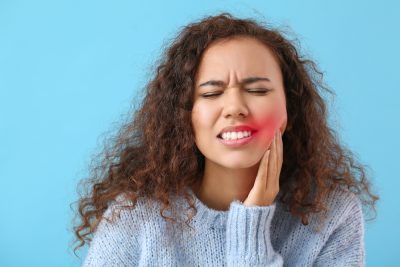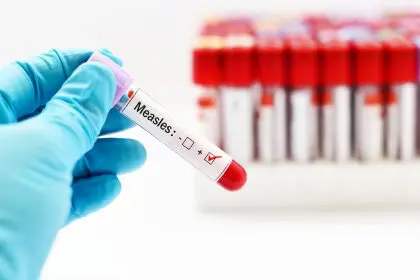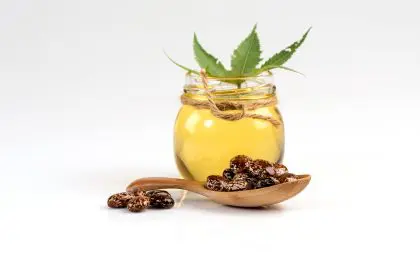Accidentally burning your gums with scalding hot food creates an immediate crisis of pain and discomfort that demands quick action. Whether from molten cheese on pizza, steaming soup, or freshly brewed beverages, thermal injuries to delicate gum tissue can cause intense pain that interferes with eating, drinking, and speaking. Understanding how to respond immediately and promote rapid healing can transform a potentially week-long ordeal into a manageable recovery within 24 to 48 hours.
The mouth’s unique environment presents both challenges and advantages for healing burned gum tissue. Constant moisture, bacteria, and the need to continue eating and drinking can complicate recovery, while the mouth’s exceptional blood supply and natural healing mechanisms can accelerate repair when proper care is provided.
Immediate response determines healing speed
The first few minutes after burning your gums with hot food are critical for minimizing damage and setting the stage for rapid recovery. Quick action can prevent deeper tissue damage and reduce the severity of pain that follows the initial injury.
Cool the area immediately with cold water
Rinsing with cool water represents the most important first step in treating burned gums. The cooling effect stops the burning process, prevents deeper tissue damage, and provides immediate pain relief. Hold cool water in your mouth for 30 to 60 seconds, allowing it to cover the burned area completely before gently spitting it out.
Repeat this cooling process several times during the first 15 minutes after the burn occurs. The temperature should be cool but not ice-cold, as extreme cold can cause additional tissue damage. Room temperature or slightly cool water works most effectively for this initial treatment.
Remove any remaining hot food particles
Check carefully for any pieces of hot food that may still be stuck to the burned gum tissue. These particles can continue causing damage and increase infection risk if left in place. Gently rinse with water to remove loose particles, but avoid aggressive brushing or poking at the burned area.
If food particles are firmly attached to the burned tissue, allow them to loosen naturally through gentle rinsing rather than forcing removal, which could cause additional trauma to already damaged tissue.
Pain management techniques that work fast
Burned gums can cause excruciating pain that makes eating, drinking, and even talking difficult. Effective pain management not only provides comfort but also supports healing by reducing stress and allowing proper nutrition during recovery.
Ice application provides numbing relief
Sucking on small ice chips or ice cubes can numb burned gum tissue and reduce inflammation. Allow the ice to melt slowly in your mouth, concentrating the cold sensation on the burned area. This technique can be repeated throughout the day as needed for pain control.
Frozen fruit pops or ice cream can serve similar purposes while providing some nutrition. The cold temperature numbs pain while the smooth texture avoids irritating damaged tissue. Choose options without acidic ingredients that might cause additional stinging.
Salt water rinses reduce inflammation
Dissolving half a teaspoon of salt in a cup of warm water creates a healing rinse that reduces inflammation and prevents bacterial growth. The salt solution helps draw out excess fluid from swollen tissues while creating an environment that supports healing.
Rinse gently with salt water three to four times daily, especially after meals. Hold the solution in your mouth for 30 seconds before spitting it out. The rinse should be warm but not hot, as additional heat will worsen the injury.
Natural healing accelerators
Several natural substances can speed healing of burned gum tissue while providing pain relief and preventing complications. These remedies work by reducing inflammation, promoting tissue repair, and creating protective barriers over damaged areas.
Honey creates protective healing environment
Raw honey possesses natural antibacterial properties and creates a protective coating over burned tissue. Apply a small amount of honey directly to the burned gum area, allowing it to coat the tissue completely. The honey will gradually dissolve, providing extended contact time for healing benefits.
Medical-grade manuka honey offers the strongest healing properties, but any raw, unprocessed honey provides benefits. Reapply honey several times throughout the day, especially before meals to provide protection during eating.
Aloe vera gel soothes and repairs
Pure aloe vera gel provides cooling relief and contains compounds that accelerate tissue healing. Apply a small amount of food-grade aloe gel directly to burned gums, allowing it to remain in contact with the tissue for several minutes before rinsing gently.
Choose aloe products specifically labeled as safe for internal use, as some topical preparations contain additives that shouldn’t be swallowed. Fresh aloe from the plant works well if available, though commercial food-grade gels offer convenience and consistent potency.
Nutritional support for rapid healing
What you eat and drink during gum burn recovery significantly impacts healing speed and comfort levels. Choosing the right foods provides necessary nutrients for tissue repair while avoiding further irritation to damaged areas.
Protein supports tissue reconstruction
Burned gum tissue requires protein to rebuild damaged cells and create new healthy tissue. Soft protein sources like Greek yogurt, scrambled eggs, and protein smoothies provide building blocks for healing without requiring aggressive chewing that could irritate burned areas.
Bone broth offers easily absorbed amino acids along with minerals that support healing. The warm liquid can be soothing when consumed at comfortable temperatures, while the protein content aids tissue repair.
Vitamin C accelerates collagen formation
Collagen forms the structural foundation for healing gum tissue, and vitamin C is essential for collagen production. Soft fruits like bananas and melons provide vitamin C without the acidity that can sting burned tissue.
Vitamin C supplements can boost healing when dietary intake is limited due to eating difficulties. Choose non-acidic forms of vitamin C to avoid irritating damaged gum tissue.
Anti-inflammatory foods reduce swelling
Foods rich in omega-3 fatty acids help control inflammation and support healing. Soft options include mashed avocado, which provides healthy fats along with vitamins that support tissue repair.
Turmeric contains powerful anti-inflammatory compounds that can be added to soft foods or mixed into healing rinses. A paste made from turmeric powder and water can be applied directly to burned gums for concentrated anti-inflammatory effects.
Foods and beverages to avoid
Certain foods and drinks can significantly slow healing and increase pain levels in burned gums. Avoiding these items during the first few days of recovery prevents setbacks and supports optimal healing conditions.
Acidic foods cause additional irritation
Citrus fruits, tomatoes, and vinegar-based foods create stinging pain when they contact burned gum tissue. The acid can actually cause additional tissue damage and delay healing by disrupting the natural pH balance needed for repair.
Carbonated beverages should also be avoided, as the bubbles can irritate sensitive tissue and the acidity can cause additional burning sensations.
Spicy and hot temperature foods worsen damage
Spicy foods containing capsaicin or other irritating compounds will cause intense pain and can worsen tissue damage. Even mild spices should be avoided until healing is complete.
Foods served at hot temperatures can cause additional burns to already damaged tissue. Allow all foods and beverages to cool to room temperature or slightly warm before consuming.
Hard and crunchy textures cause trauma
Chips, crackers, and other hard foods can scrape against burned gum tissue, reopening wounds and causing additional damage. The mechanical trauma from chewing hard foods can significantly extend healing time.
Sticky foods like caramel or taffy can adhere to burned tissue and pull away healing skin when removed. Avoid these textures until gums have completely healed.
Signs of proper healing progression
Understanding normal healing progression helps identify when recovery is proceeding properly and when additional intervention might be needed. Burned gum tissue typically follows predictable healing patterns when properly cared for.
Pain reduction within 24 hours
Properly treated gum burns should show noticeable pain reduction within the first 24 hours. While some discomfort may persist, the intense burning pain should begin to subside as cooling treatments and protective measures take effect.
If pain continues to worsen after 24 hours or doesn’t show improvement after 48 hours, the burn may be more severe than initially apparent or complications may be developing.
Tissue color changes indicate healing
Initially burned gum tissue may appear bright red or white, depending on the severity of the burn. As healing progresses, the color should gradually return toward normal pink, indicating healthy blood flow and tissue repair.
Persistent white areas may indicate deeper tissue damage, while increasing redness could suggest infection or continued irritation.
When healing isn’t progressing normally
While most gum burns from hot food heal quickly with proper care, certain warning signs indicate the need for professional evaluation. Recognizing these signs early prevents minor injuries from becoming serious complications.
Persistent severe pain beyond 48 hours
Pain that doesn’t improve or continues to worsen after two days may indicate deeper tissue damage or developing complications. Burns that initially seemed minor can sometimes involve deeper layers of tissue that require professional treatment.
Signs of infection development
Increasing swelling, pus formation, or foul taste in the mouth suggests bacterial infection of the burned tissue. The mouth’s bacteria-rich environment can sometimes overwhelm the body’s natural healing processes, especially in deeper burns.
Fever, swollen lymph nodes, or spreading red streaks indicate that infection may be spreading beyond the local burn site and requires immediate professional attention.
Difficulty eating or drinking after 72 hours
While some dietary modification is normal during gum burn recovery, complete inability to eat or drink after three days suggests the injury may be more severe than typical hot food burns.
Prevention strategies for future protection
Understanding how gum burns occur helps prevent future injuries and reduces the risk of repeated damage to oral tissues. Simple precautions can eliminate most hot food burns while maintaining enjoyment of favorite foods.
Temperature testing before eating
Testing food temperature with lips or tongue tip before taking full bites allows assessment of heat levels without risking gum burns. The lips and tongue tip are more sensitive to temperature than gums and provide early warning of dangerous heat levels.
Stirring hot foods and allowing steam to escape reduces concentrated heat spots that often cause burns. Molten cheese and thick sauces retain heat longer than other food components and require extra cooling time.
Proper cooling techniques
Blowing on hot foods helps reduce surface temperature but may not cool internal heat in thick or dense foods. Spreading food on plates or stirring frequently allows more effective heat dissipation.
Adding cool ingredients like sour cream or cold vegetables to hot dishes can quickly reduce overall temperature while adding nutritional value.
Recovery from gum burns caused by hot food doesn’t have to be a prolonged ordeal when proper techniques are applied immediately and consistently. The combination of immediate cooling, effective pain management, natural healing accelerators, and appropriate dietary modifications can transform a potentially week-long recovery into a manageable 24 to 48-hour healing process. Understanding these techniques empowers individuals to take control of their recovery and return to normal eating and comfort levels as quickly as possible.












